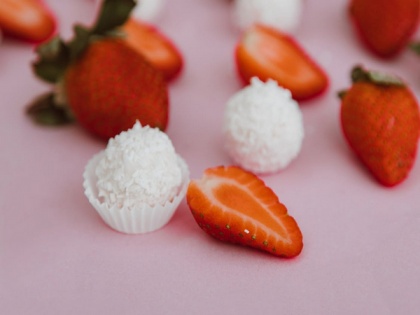Strawberry production leaves long-term plastic pollution: Study
By ANI | Published: July 10, 2023 09:15 AM2023-07-10T09:15:15+5:302023-07-10T09:20:17+5:30
Washington [US], July 10 : Researchers discovered that the plastic mulch used to help Californian strawberries grow sheds ...

Strawberry production leaves long-term plastic pollution: Study
Washington [US], July 10 : Researchers discovered that the plastic mulch used to help Californian strawberries grow sheds a large number of plastic mulch fragments.
These particles have been shown to have a negative impact on soil quality, casting doubt on their long-term viability. The survey's findings are likely to apply to plastic use in agricultural production around the world.
Presenting their work at the Goldschmidt geochemistry conference in Lyon, postdoctoral researcher Dr Ekta Tiwari (from the Sistla group at California Polytechnic State University) said "What we are seeing a huge quantity of macroplastic plastic material - particles bigger than 5mm across -being shed where the mulch is used to enhance strawberry production. These can remain in the soil for decades or longer".
Plastics, such as polyethene, are increasingly used in agriculture, for example in polytunnels. Plastic mulch films are extensively used in agriculture, where they provide a range of benefits. They are tucked in around the base of the plant, which can help control weeds and pathogens, reduce water evaporation, and prevent soil splashing on fruit (which is particularly important for strawberries).
The mulch is applied in rows and then removed after the crop's seasonal production is complete. However, even careful land stewardship by farmers does not ensure all the plastic is removed because fragments get left behind and adhere to the soil during removal. After decades of annual plastic mulch application and removal, the researchers observed the accumulation of plastic fragments within farm soils, even in really well-managed fields. The researchers looked for microplastics, which are plastic pieces more than 5mm across.
Ekta Tiwari continued "We carried out a systematic survey of strawberry fields after the seasonal removal of these plastic film. We found that the distribution was fairly uniform. On field surfaces alone, we found up to 213,500 macroplastic particles per hectare. That doesn't include subsurface particles, which we did not survey. In addition, we are currently analysing the same soil samples for microplastics, which are smaller particles, less than 5mm across; these are not yet included in our findings".
Note: A hectare is 10,000 square metres. For comparison, an average professional soccer playing pitch is around 7100 square metres.
Most of the particles are polyethene (identified using Fourier transform infrared spectroscopy). In preliminary findings, the researchers found that as the levels of microplastic pollution increased, soil moisture content, microbial respiration, and plant-available nitrogen declined.
Dr. Tiwari added "The plastic mulch provides benefits, but at the expense of long-term soil quality. It's difficult and expensive to remove these particles from the soil, so once they are there they can stay there indefinitely".
We tend to think that strawberries are simply things to be enjoyed, but this shows that even something as delicious as fresh strawberries can come with a cost to the environment. We are working with the manufacturers to see if we can mitigate these costs".
Disclaimer: This post has been auto-published from an agency feed without any modifications to the text and has not been reviewed by an editor
Open in app